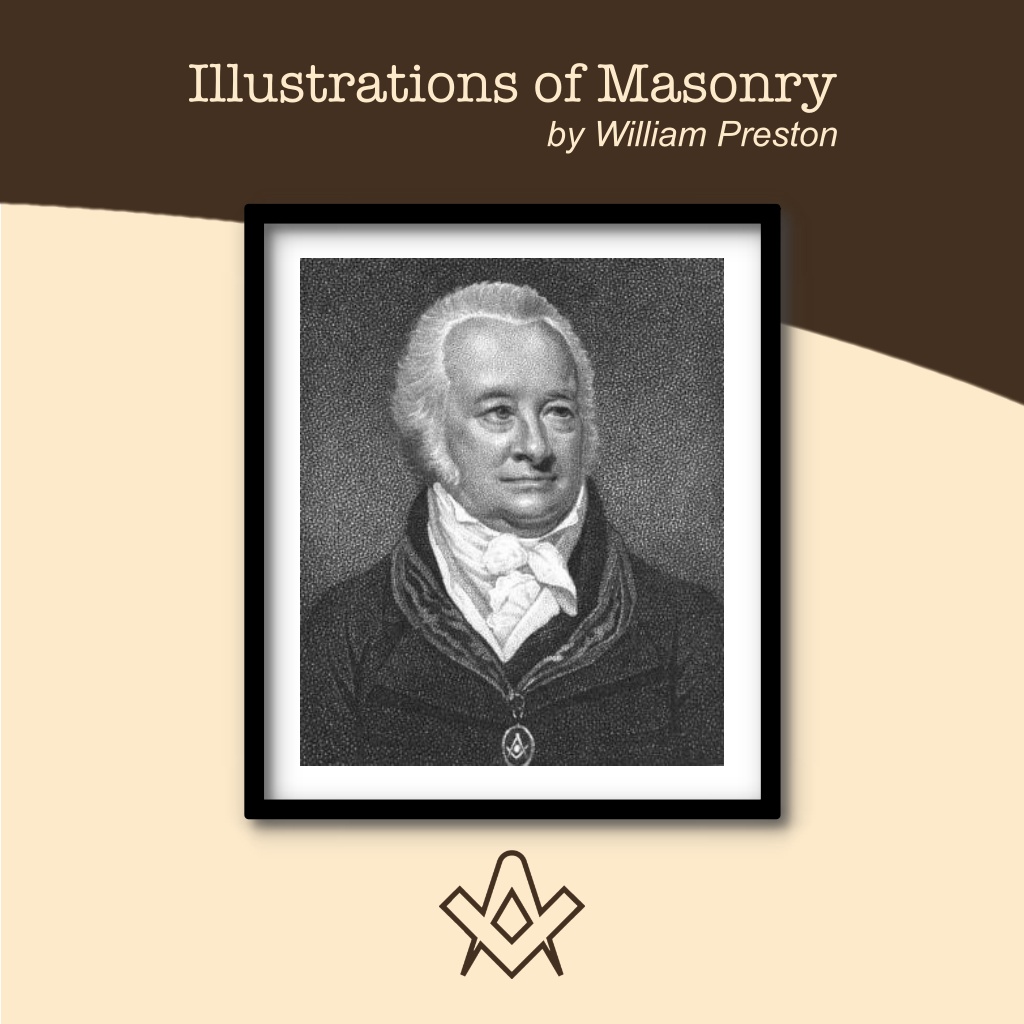Introduction to:
William Preston (1742-1818)
William Preston (7 August 1742 – 1 April 1818) was a Scottish author, editor and lecturer, born in Edinburgh.
After attending school and college he became secretary to the linguist Thomas Ruddiman, who became his guardian on the death of his father.
On the death of Thomas, Preston became a printer for Walter Ruddiman, Thomas’ brother. In 1760 he moved to London and started a distinguished career with the printer William Strahan.
He became a Freemason, instituting a system of lectures of instruction, and publishing Illustrations of Masonry, which ran to several editions.
It was under Preston that the Lodge of Antiquity seceded from the Moderns Grand Lodge to become “The Grand Lodge of All England South of the River Trent” for ten years.
He died on 1 April 1818, after a long illness, and was buried in St Paul’s Cathedral.
Shortly after Preston’s arrival in London, a group of Edinburgh Freemasons living in the English capital decided to form themselves into a lodge.
The Grand Lodge of Scotland felt they could not grant them a constitution, as they recognised the jurisdiction of the Antient’s Grand Lodge in the capital.
They were accordingly constituted as Lodge no. 111 at the “White Hart” in the Strand on 20 April 1763.
It may have been at this meeting that Preston became their second initiate. Unhappy with the status of the relatively new Grand Lodge which they found themselves part of, Preston and some others began attending a lodge attached to the original Grand Lodge of England, and persuaded their brethren to change allegiance.
Accordingly, on 15 November 1764, Lodge no 111 of the Antients became Caledonian Lodge no 325 (now 134), under a constitution which was just starting to be known as the “Moderns”; [1] that lodge later held its meetings at the Great Eastern Hotel on Liverpool Street in London [3].
Antient/ancient and Modern referred to the ritual used by the respective constitutions, not to the age of the Grand Lodges. The shift of allegiance occasioned some vitriolic correspondence between Caledonian Lodge and their former Grand Lodge.[4]
Caledonian Lodge then became the major component in the first Grand Chapter of Royal Arch Masonry.[5]
Preston soon began an extensive program of masonic research.
Interviewing where he could, and entering into an extensive correspondence with Freemasons in Britain and overseas, he built a vast storehouse of masonic knowledge, which he applied initially to explaining and organising the lectures attached to the three degrees of Freemasonry.
He met with friends once or twice a week to test and refine his presentation, and on 21 May 1772 he organised a Gala at the Crown and Anchor in the Strand, at his own considerable expense, to introduce the Grand Officers and other prominent masons to his system.
The success of his oration on that day led to the publication, later that year, of his Illustrations of Masonry, which ran to twelve English editions in the authors lifetime, as well as being translated into other languages.
In 1774 he organised his material into lecture courses, delivered by him at the Mitre Tavern, Fleet Street. There were twelve lectures per degree, at one guinea per degree. [1] [6]
Present at the Gala were two members of the Lodge of Antiquity (once, as the Goose and Gridiron, a founder of the Grand Lodge).
John Bottomley was then the Master, and John Noorthouck a colleague of Preston at Strahan’s printing firm. Antiquity was suffering from declining membership, and these two men conceived the idea of reviving their lodge by recruiting Preston.
He was elected a member, in absentia, on 1 June 1774. On his first attendance as a member, a fortnight later, he was elected Master of the lodge.
The lodge accordingly flourished, which somehow displeased Bro Noorthouck.
He complained that the younger masons who now flocked to the lodge were all Preston’s creatures, which had enabled him to stay in the chair for three and a half years. [1]
During this period, commencing in 1769, Preston became the Assistant Grand Secretary, and “Printer to the Society”.
This gave him access to material which he subsequently used in Illustrations of Masonry. [1]
It also gave him the opportunity to attempt to drive a wedge between the Antients and the Grand Lodge of Scotland, by challenging the basis on which the younger Grand Lodge was formed.
The attempt failed, and only served to widen the division between the two Grand Lodges. [4]
On 27 December 1777, some members of the Lodge of Antiquity, including Preston, returned from church wearing their masonic regalia.
This amounted to little more than crossing the road. Certain of the original members of Antiquity who were not present (and who included the two men who had persuaded Preston to join Antiquity) chose to report the incident to Grand Lodge as a proscribed Masonic procession.
Instead of playing down the occasion, Preston chose to defend the actions of himself and his brethren by emphasising the seniority of his own lodge.
As the Goose and Gridiron, Antiquity had been one of the founders of Grand Lodge. Preston argued that his lodge had only subscribed to the original constitutions, and subsequent rulings did not apply to them. After due process, Preston and his supporters were expelled in 1779.
This split Antiquity. The longer standing members stayed with the Moderns. The rest of the lodge allied itself with the Grand Lodge of All England at York, becoming for the period of their separation, “The Grand Lodge of All England South of the River Trent”, warranting at least two lodges in its own right.
In May 1789 the dispute was resolved, Preston, after an apology, was welcomed back to his Masonic Honours at a dinner, and the two halves of the Lodge of Antiquity were re-united in 1790. [1] [7]
Preston’s expulsion from Grand Lodge signaled a great reduction in his contribution to Freemasonry.
He had been absent from lodge for a year when he resigned in 1781. His brethren persuaded him to return five years later, which halted another period of decline.
He claimed to have warranted several lodges in his period of exile in a rebel grand lodge, but only two have been verified.
About the time of his re-admission to the Moderns, he founded the Order (or Grand Chapter) of Harodim, which was a vehicle for his own ideas about masonry as expressed in his lectures.
This died out in about 1800. Preston took no part, and passed no public comment, in the long process of unification of the two Grand Lodges.
His major masonic legacy must be considered to be his Illustrations of Masonry, which continued to new editions after his death, after a long illness, in 1818. [1][2]
While Preston is remembered as a masonic scholar, few modern masons have read his work.
His history of freemasonry is every bit as far fetched as Anderson’s, although it starts far later with Athelstan, and his lectures and explanations must be read as a work of its time, relating the Freemasonry of the late Eighteenth century to the people of that time. [8]
Preston’s lasting impact is in drawing the perception of Freemasonry away from the bar and the dining table, and giving it a more cerebral appeal. [9]
Preston is also associated, with Grand Secretary James Heseltine and Thomas Dunckerley, with the movement of Masonic meetings from taverns into dedicated Masonic buildings. [10]
Footnotes
Referances
[1] Phoenix Masonry Archived 20 January 2013 at the Wayback Machine Gordon P. G. Hills, Brother William Preston, an Illustration of the Man, his Methods and his Work. Prestonian Lecture, 1927
[2] Masonic Dictionary Entry from Mackey’s Encyclopaedia of Freemasonry
[3] Denslow, William R. (2004). 10,000 Famous Freemasons V3, K to P. pp. 365–66. ISBN 9781417975792.
[4] Witham Matthew Bywater, Notes on Laurence Dermott G.S. and his Work, London, 1884
[5] Camberley Lodge A.D. Matthews, An Historical Perspective on The Holy Royal Arch, Lecture July 2009, pdf retrieved 18 September 2012
[6] Masonic World Anon, William Preston, Short Talk Bulletin, February 1923
[7] Pietre Stones H. L. Haywood, Various Grand Lodges, The Builder, May 1924
[8] Masonic Dictionary Roscoe Pound, William Preston, The Builder, January 1915
[9] Nebraska Masonic Education Andrew Prescott, A History of British Freemasonry 1425-2000, CRFF, University of Sheffield
[10] Henry Sadler, Thomas Dunckerley, his Life, Labours and Letters.archive.org

Introduction to Illustrations Of Masonry
By William Preston (1742-1818)
Whoever attentively considers the nature and tendency of the Masonic Institution, must readily perceive its general utility.
From an anxious desire to display its value, I have been induced to offer the following sheets to the Public.
Many reasons might have withheld me from the attempt; my inexperience as a writer, my attention to the duties of a laborious profession, and the many abler hands who have treated the subject before me : yet, under all these disadvantages, the persuasion of friends, added to a warm zeal in the cause, have stimulated me to risk my reputation on the fate of my performance.
When I first had the honour to be elected Master of the Lodge, I thought it proper to inform myself fully of the general rules of the Society, that I might be better enabled to execute my own duty, and especially enforce obedience in others.
The methods which I adopted with this view, excited in some of superficial knowledge an absolute dislike of what they considered as innovations ; and in others, who were better informed, a jealousy of pre-eminence which the principles of Masonry ought to have checked.
Notwithstanding these discouragements, however, I persevered in my intention of supporting the dignity of the Society, and of discharging with fidelity the duties of my office.
As candour and integrity, uninfluenced by interest or favour, will ever support a good cause, some of my opponents (pardon the expression) soon began to discover their error, and cheerfully concurred in the execution of my measures; while others, of less liberality, tacitly approved what their former declared opinions forbad them publicly to adopt.
This success, which exceeded my most sanguine wishes, encouraged me to examine with more attention the contents of our Lectures.
The rude and imperfect state in which I found them, the variety of modes established at our meetings, and the difficulties I had to encounter in my researches, rather discouraged my first attempt : persevering, however, in the design, I continued the pursuit ; and, with the assistance of a few Brethren, who had carefully preserved what ignorance and degeneracy had rejected as unintelligible and absurd, I diligently sought for, and at length happily acquired, some of the ancient and venerable landmarks of the Order.
Fortunate in the acquisition of friends, and fully determined to pursue the design of effecting a general reformation, we persevered in an attempt to correct the irregularities which had crept into our assemblies, and exemplify at all our meetings the beauty and utility of the Masonic System.
We commenced our plan by enforcing the value of the ancient charges and regulations of the Order, which inattention had suffered to sink into oblivion, and established those charges as the basis of our work.
To imprint on the memory a faithful discharge of our duty, we reduced the more material parts of the system into practice; and, in order to encourage others to promote the plan, we made a general rule of reading one or more of these charges at every regular meeting, and elucidating such passages as seemed obscure.
The useful hints which were afforded by these means enabled us gradually to improve the plan, till we at last succeeded in bringing into a connected form all the Sections which now compose the three Lectures of Masonry.
The progress daily made by our system pointed out the propriety of obtaining the sanction of our Patrons : several Brethren, of acknowledged honour and integrity, therefore, united in an application to the most respectable Members of the Society for countenance and support.
They happily succeeded to the utmost of their wishes, and since that time the plan has been universally admitted as the basis of our Moral Lectures.

Illustrations of Masonry.
Reprint of the Rare 1772 Edition
This work has been selected by scholars as being culturally important, and is part of the knowledge base of civilization as we know it.
This work was reproduced from the original artifact, and remains as true to the original work as possible.
Therefore, you will see the original copyright references, library stamps (as most of these works have been housed in our most important libraries around the world), and other notations in the work.
This work is in the public domain in the United States of America, and possibly other nations. Within the United States, you may freely copy and distribute this work, as no entity (individual or corporate) has a copyright on the body of the work.
As a reproduction of a historical artifact, this work may contain missing or blurred pages, poor pictures, errant marks, etc.
Scholars believe, and we concur, that this work is important enough to be preserved, reproduced, and made generally available to the public.
We appreciate your support of the preservation process, and thank you for being an important part of keeping this knowledge alive and relevant.
Recent Articles: in this series
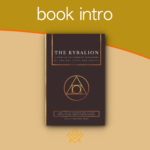 Unravel the secrets of the ancient Egyptian wisdom with our comprehensive guide to the Kybalion, by Three Initiates. Discover its influence on modern thought, the controversies surrounding it, and its seven profound Hermetic principles. Unlock the power of these timeless teachings to transform your understanding of life's mysteries. |
 Book Intro - The Working Tools of an Old York Master by Wilmshurst Unlock the Secrets of Freemasonry! Dive into the profound symbolism of 'The Working Tools of an Old York Master.' Discover the hidden meanings behind the square, compass, plumb line, and more. Embark on a transformative journey of personal growth and spiritual enlightenment. Uncover the ancient wisdom that has shaped generations of Masons. |
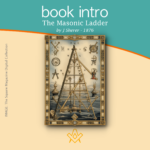 Book Intro - The Masonic Ladder by J Sherer Unlock the mysteries of Freemasonry with "The Masonic Ladder" by J. Sherer - - 1876. This 19th-century guidebook takes readers on a journey through the steps of the Masonic ladder, from the basic principles of the Entered Apprentice to the highest degree of the Sovereign Grand Inspector General. Discover the symbolism, allegory, and values of Freemasonry in this timeless classic. |
 Book Intro - The London mason in the seventeenth century The London Mason in the Seventeenth Century by Douglas Knoop offers a comprehensive examination of the lives and work of masons in the bustling city of London during the seventeenth century. The book delves into the intricacies of their craft, the socioeconomic and political forces that influenced their profession, and the role they played in shaping the architectural landscape of London. |
 Book Intro - History of Freemasonry, Gould, Robert Freke The History of Freemasonry is a comprehensive overview of the origins, development, and evolution of Freemasonry from its ancient roots to the modern era. The book explores the fascinating history of one of the oldest and most mysterious organisations in the world, which has been the subject of much speculation and curiosity over the centuries. - by Robert Freke Gould |
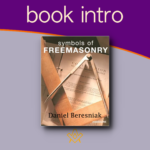 Book Intro - Daniel Beresniak Symbols Of Freemasonry This book is a collection of the symbolic images which Freemasons encounter on their journeys of transformation.' The texts and illustrations form an intimate dialogue whose subject is Freemasonry, and which casts light on the relationship between dreams and reality, reason, intuition and imagination. |
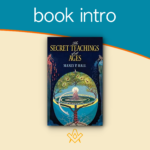 Book Intro - The Secret Teachings of All Ages by Manly P Hall The Secret Teachings of All Ages by Manly P Hall is a comprehensive and in-depth exploration of the various esoteric and occult traditions that have shaped human history. The book covers a wide range of subjects including alchemy, astrology, mysticism, and secret societies, and provides detailed explanations of the underlying principles and concepts. |
 Book Intro - Duncan's Masonic Ritual and Monitor Duncan's Masonic Ritual and Monitor is an impression of the Old York Rite published in New York in 1866. |
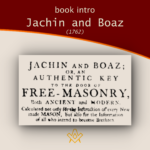 Book Intro - Jachin and Boaz (1762) Thirty two years after Samuel Prichard's Masonry Dissected (1730) a second detailed exposure was published Jachin and Boaz (1762) attributed to the same author, and met with equal distain by Freemasons of the time. However, these exposures offer the masonic historian an invaluable view in to how freemasonry was conducted during its early formation |
 Book Intro - Three Distinct Knocks (c.1760) Giving an exact account of all their proceedings in making a brother, with the three obligations or oaths belonging to the first second, and third degrees of masonry, viz. The entered apprentice, fellow-craft, and master-mason: with the obligating on belonging to the chair, and the grip and word. |
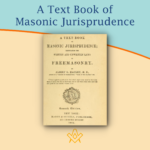 Book Intro - A Text Book of Masonic Jurisprudence An introduction to Albert Mackey's seminal work on Masonic Jurisprudence – the theory or philosophy of Masonic law. The Foundations of Masonic Law are to be found in the Landmarks, or Unwritten Law, and in the Ancient Constitutions, or the Written Law. These constitute the subject matter of the book. |
 Book Intro - The Perfect Ceremonies Of Craft Masonry 1871 A beautiful example of a the rituals, produced in a Medieval illuminated script style. Facsimiles still exist of this illustrated ritual book, of which the most authentically produced version is that available from the Scottish Rite Masonic Book Club. |
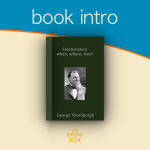 Book Intro – Freemasonry; when, where, how? Introduction to Freemasonry; when, where, how? By George Thornburgh |
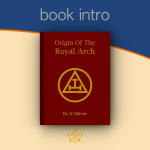 Book Intro - Origin Of The Royal Arch An introduction to the Origin of the Royal Arch, through the eyes of the English nineteenth century masonic author Dr G Oliver (1782–1867) |
 Book Intro – Symbolical Masonry Symbolical Masonry is a treasure-house of Masonic lore, including discussions of key concepts of the first three degrees, along with an extensive study guide. |
 This month we look at – 'A portrait gallery, with biographical sketches of prominent freemasons throughout the United States' |
 Extracted and abridged from The Mystic Tie: Or, Facts and Opinions, Illustrative of the Character and Tendency of Freemasonry By Albert Mackey, |
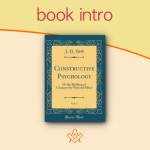 Book intro - Constructive Psychology The introduction to Constructive Psychology or The Building Of Character By Personal Effort by J D Buck a masonic author |
 book intro - Cagliostro: the splendour and misery of a master of magic Preface to the book by William Rutherford Hayes; Cagliostro: the splendour and misery of a master of magic |
 book intro - Origin of the Rosicrucians and the Free-Masons Historico-Critical Inquiry into the Origin of the Rosicrucians and the Free-Masons – Thomas De Quincey |
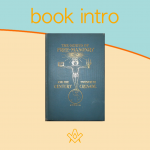 Book Intro - The Genius of Freemasonry The Genius of Freemasonry: “Has any brother anything to offer for the good of Masonry?” The following pages are the author’s answer to that question. |
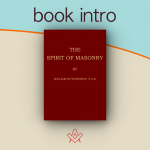 Book Intro - The Spirit of Masonry An essential source for anyone interested in exploring the inner mysteries of the Masonic Fraternity. |
 Book intro - History of Freemasonry Introduction to a classic masonic book by J. G. Findel, History of Freemasonry published 1866 |
 The Book of Constitutions for the Ancient Grand Lodge or Ahiman Rezon |
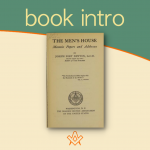 A short introduction to The Men's House, a collection of masonic papers and addresses |
 This is a general survey of Masonic origins, history and philosophy. It was at one time given to every new Mason in Iowa. |
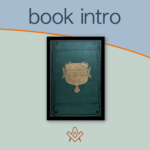 Book Intro - The Discrepancies of Freemasonry Written almost 150 years ago, this book contains wisdom still relevant today. |
 Book Intro - The Principles of Masonic Law "The first great duty, not only of every lodge, but of every Mason, is to see that the landmarks of the Order shall never be impaired". |
 Published in 1911, this fascinating book is equally relevant for the 21st century Mason with an interest in the more mystical side of Freemasonry. |
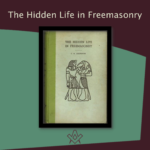 Book Intro - Hidden Life of Freemasonry Introduction to The Hidden Life in Freemasonry (1926) by Charles Webster Leadbeater |
 Book Intro - The Symbolism of Freemasonry Introduction to a classic masonic book; The Symbolism of Freemasonry: Illustrating and Explaining Its Science and Philosophy, its Legends, Myths and Symbols. |
 Book Intro - The Meaning of Masonry This is the Introduction to The Meaning of Masonry, a set of essays which discuss the esoteric side of Masonry |
 Book Intro - Illustrations of Masonry Introduction to Illustrations Of Masonry by William Preston (1742-1818) |
masonic knowledge
to be a better citizen of the world
share the square with two brothers

click image to open email app on mobile device
